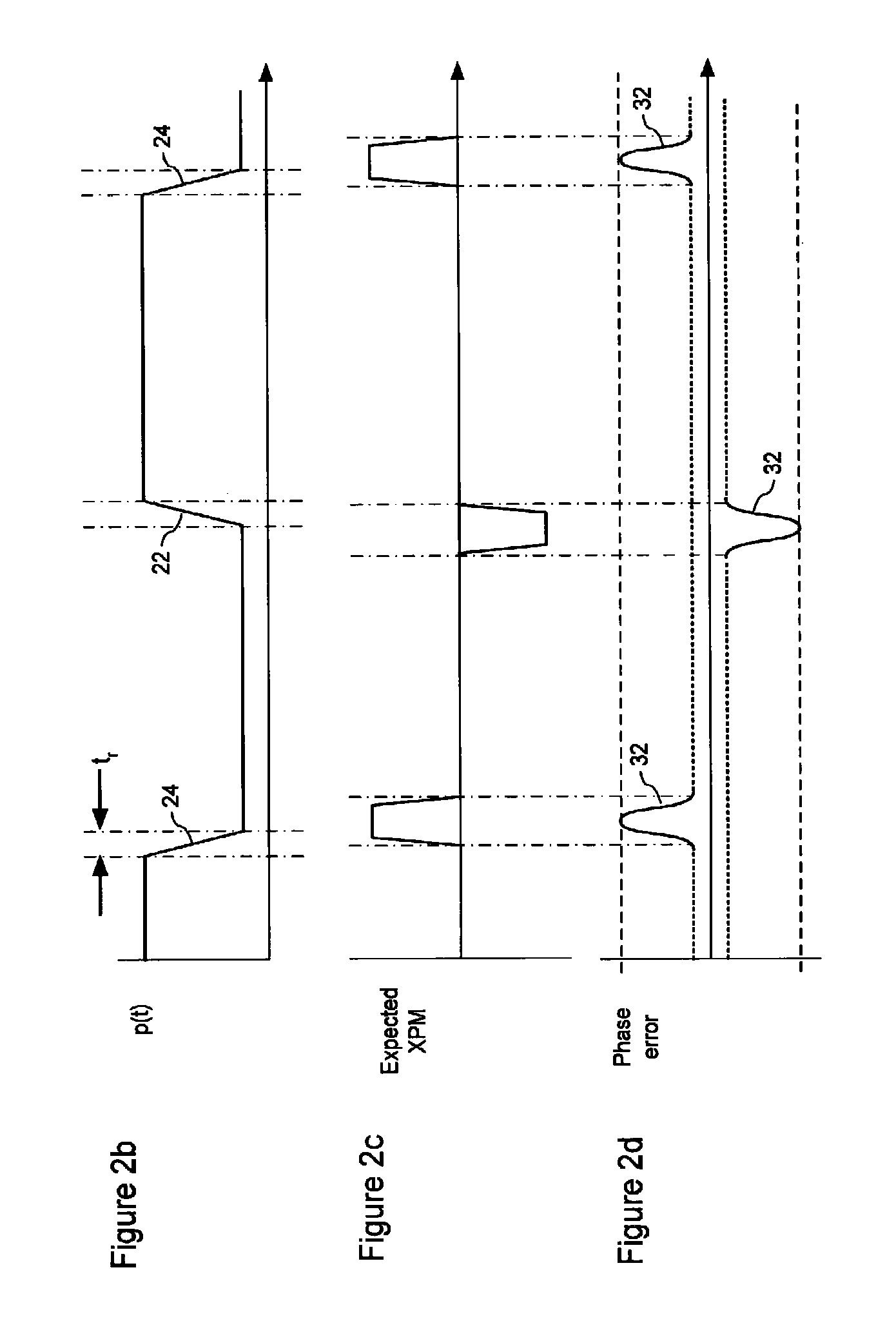Monitoring phase non-linearities in an optical communication system
a technology of optical communication system and phase non-linearity, applied in the field of optical communication system monitoring phase non-linearity, can solve the problems of limiting system performance and signal reach, degrading optical signal, and affecting so as to simplify the correlation algorithm and improve the accuracy of correlation function
- Summary
- Abstract
- Description
- Claims
- Application Information
AI Technical Summary
Benefits of technology
Problems solved by technology
Method used
Image
Examples
first embodiment
[0032]FIGS. 2a-2d schematically illustrate principal elements and operations of a monitoring system in accordance with the present invention. The embodiment of FIG. 2 is particularly suited for monitoring cross phase modulation (XPM) between a pair of channels. In the illustrated example, XPM is monitored between a first channel, which is nominally designated as channel A, and a second channel, nominally designated as Channel N. Thus a probe signal p(t) is transmitted through channel A using carrier wavelength 4, while a data signal D(t) is simultaneously transmitted through channel N using carrier wavelength 4T. As the two signals co-propagate through the link 6, XPM between channels A and N generates a test signal T(t) which is received, by the receiving node 4b, through channel N.
[0033]As is known in the art, XPM within the link 6 can be mathematically modeled (at least to a linear approximation) by means of a “transfer” function H(f); where the term (f) refers to the frequency v...
third embodiment
[0052]FIGS. 4a-4c schematically illustrate principal operations of a monitoring system in accordance with the present invention. Operation of this embodiment is based on the fact that, apart from dispersion and polarization effects (both of which can be compensated using known techniques), the received data signal DOUT(t) arriving at the receiving node 4b through the link 6 contains noise due to intersymbol interference, ASE and Thermal noise, and phase non-linearities. Within a sufficiently long “flat region” of the received data signal DOUT(t) (i.e., a string of successive binary “1”s or “0”s), variance due to intersymbol interference is avoided, so that the total noise power will comprise ASE and Thermal noise, and phase non-linearities. As shown in FIG. 4b, the ASE and Thermal noise is substantially independent of dispersion, while phase non-linearities are strongly dispersion dependent. Accordingly, phase non-linearities can be isolated and monitored by detecting changes in the...
PUM
 Login to View More
Login to View More Abstract
Description
Claims
Application Information
 Login to View More
Login to View More - R&D
- Intellectual Property
- Life Sciences
- Materials
- Tech Scout
- Unparalleled Data Quality
- Higher Quality Content
- 60% Fewer Hallucinations
Browse by: Latest US Patents, China's latest patents, Technical Efficacy Thesaurus, Application Domain, Technology Topic, Popular Technical Reports.
© 2025 PatSnap. All rights reserved.Legal|Privacy policy|Modern Slavery Act Transparency Statement|Sitemap|About US| Contact US: help@patsnap.com



